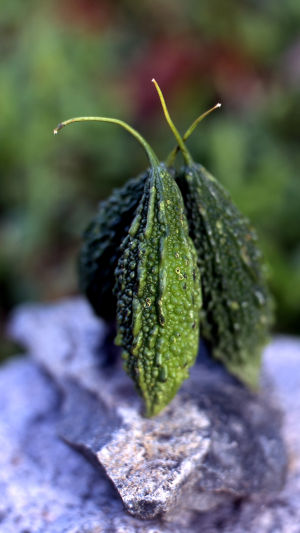Bitter gourd, with its deeply corrugated skin and an interior that ranges from white to green, is a staple in many Asian cuisines. It is celebrated not only for its culinary versatility but also for its medicinal properties, which have been recognized in traditional medicine across the world.
This vegetable belongs to the Cucurbitaceae family, which includes melons, cucumbers, and squashes. However, unlike its sweeter relatives, bitter gourd is prized for its bitter flavor, which is attributed to the presence of compounds such as cucurbitacin.
<h3>Why Don't People Wait for Bitter Gourd to Become Sweet Before Eating It?</h3>
The interesting question of why bitter gourd is consumed despite its bitterness rather than being allowed to ripen into sweetness is a fascinating one. The answer lies in the vegetable's unique chemical composition. As bitter gourd matures, the levels of cucurbitacins increase, which leads to bitterness. These compounds are not only a defense mechanism against pests but are also believed to possess a variety of health benefits. They have been linked to anti-diabetic effects, anti-cancer properties, and the ability to lower blood sugar levels.
Moreover, the peak nutritional value of bitter gourd is found in its unripe state. As it ripens, some of the vital nutrients diminish, and the sugar content increases, making it less beneficial for those seeking the vegetable's health advantages. Additionally, the texture and culinary uses of bitter gourd are best enjoyed while it is still firm and green. When it becomes ripe and turns yellow, it softens and becomes less appealing for use in many traditional dishes that require the vegetable to hold its shape and texture.
<h3>A Healthy Recipe for Bitter Gourd</h3>
One of the best ways to appreciate bitter gourd is through a recipe that balances its bitterness while highlighting its unique flavor. Here is a detailed recipe for a healthy, stir-fried bitter gourd dish:
<b>Ingredients:</b>
1. 2 medium-sized bitter gourds
2. 1 tablespoon salt (for rubbing the gourds)
3. 2 tablespoons olive oil
4. 2 cloves garlic, minced
5. 1 onion, thinly sliced
6. 1 red bell pepper, julienned
7. 2 tablespoons soy sauce
8. 1 tablespoon honey (optional, for those who prefer a slightly sweet contrast)
9. A pinch of salt and black pepper to taste
<b>Instructions:</b>
1. Begin by slicing the bitter gourds in half lengthwise and using a spoon to scoop out the seeds and the white flesh inside. Slice the gourds thinly. Rub the slices with a tablespoon of salt and let them sit for about 20 minutes. This process helps to reduce some of the bitterness. Rinse the slices under cold water and squeeze them gently to remove excess moisture.
2. Heat the olive oil in a large skillet or wok over medium heat. Add the minced garlic and onion, sautéing until they are soft and fragrant. Add the red bell pepper and stir-fry for an additional 2 minutes.
3. Add the bitter gourd slices to the skillet. Stir-fry for about 5 minutes, or until the slices are tender yet still crisp. If you prefer a milder bitterness, you can cover the skillet and let it steam for a few minutes, which softens the bitter gourd further.
4. Add the soy sauce and honey (if using) to the skillet. Stir well to coat the bitter gourd and vegetables. Season with a pinch of salt and black pepper to taste. Cook for another 2 minutes, allowing the flavors to meld together.
5. Remove the skillet from heat and serve the stir-fried bitter gourd hot. It pairs beautifully with steamed rice or can be enjoyed as a standalone dish.
Bitter gourd, with its unique flavor and numerous health benefits, is a vegetable that deserves a place in the global culinary landscape. Its consumption in the bitter state maximizes the vegetable's nutritional benefits and culinary versatility.





